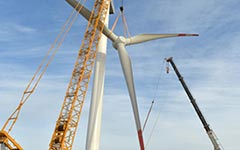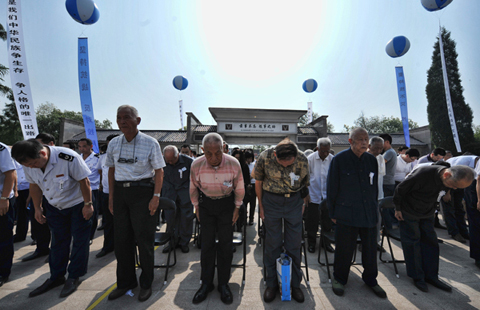New energy a new magnet for Xinjiang investment
Updated: 2014-09-06 15:11
(Xinhua)
|
|||||||||||
URUMQI - China's Xinjiang Uygur autonomous region, with an abundance of flat, windy expanses and steady sunshine, is becoming a magnet for investors seeking to harness the region's clean energy resources.
This became apparent as investors inked several major energy deals at the fourth China-Eurasia Expo (CEE), a six-day international fair that concluded Saturday in Urumqi, Xinjiang's regional capital.
On Tuesday, Huocheng county of Ili Kazak autonomous prefecture drew a 500-million-yuan photovoltaic project with Zhenfa New Energy, based in the eastern Jiangsu province. The project is expected to be put in production this year.

|
 |
Huocheng is a prime example of the investment scene emerging across Xinjiang. According to official statistics, a total of 23 industrial projects involving clean energy were clinched at the CEE this year, with a total contract value of about 37.7 billion yuan ($6.1 billion), topping the combined investments of traditional projects in coal and coal chemical industries.
In recent years, renewable energy is increasingly a new choice for investors over traditional resources amid China's worsening environmental woes, particularly in Xinjiang, where new energy such as wind and solar are largely available thanks to the region's geological conditions.
Xinjiang is home to nine major wind areas. Its wind energy accounts for 37 percent of the country's total, only second to North China's Inner Mongolia autonomous region. Meanwhile, average daily hours of sunshine in Xinjiang is the second best around the country, allowing for photovoltaic projects to be steered through the wide areas of desert and sand.
Another underlying reason for the new energy fervor at the expo is governmental support, explained Yu Wuming, deputy director with the National Windpower Engineering Technology Research Center.
In 2012, the National Development and Reform Commission put forward a broad-stroke plan for Xinjiang encouraging power generation via renewable energy, which, according to Yu, laid a solid foundation for future projects.
The region's ultra-high voltage power transmission line, which transmits electricity from Xinjiang to the eastern area of China, has also contributed to the growing number of investors in the region.
Xinjiang expects to reach a capacity of 13 million kw of wind power and 3 million kw of photoelectricity by the end of 2014, according to State Grid Xinjiang Electric Power Company.
Related Stories
Urumqi boasts first marsh gas power plant 2014-07-21 08:38
Xinjiang aims to become onshore energy base 2014-04-21 17:59
Taking the green road to growth 2014-08-29 07:15
Clean energy fueling the future 2013-11-28 00:20
China regains clean energy investment lead 2013-04-19 01:52
Clean energy to alleviate China's water shortage 2013-04-12 16:07
Today's Top News
Ukrainian president orders ceasefire in east
Alibaba to raise $20b in IPO record
Li urges collaboration on MH370
Number of new companies surging
NATO to offer tailored support to Ukraine
Babies bob about in water at US's first baby spa
News website staff face extortion probe
China's meeting on 13th five-yr plan
Hot Topics
Lunar probe , China growth forecasts, Emission rules get tougher, China seen through 'colored lens', International board,
Editor's Picks

|

|

|

|

|

|





